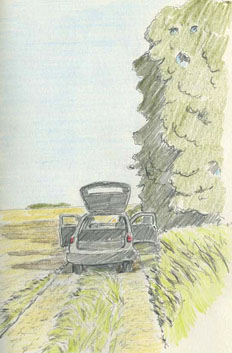
Contact me Go to home page Return to main travel page
Holland & Northern France
2023
*
Michael Kluckner
| Our first time in Holland since 1986 and a
return with the small sketchbook and some pencils to a part of
France where we've travelled before, in '86 and 2008.
This has become my ultra-lightweight travel-art kit – the
watercolour sketchbooks and gear I used to carry have become too
heavy for my aging self, and painting really does take a lot of
time! There's no question that the watercolours I used to do while travelling are more effective, if that's the right word, than the small pencil sketches, but ... sometimes you just have to move on. The most ambitious European trip for painting was the 3-month Winter in the Mediterranean in 1992-3 that I have only slightly covered on this website. We may try to revisit that landscape again one day and – who knows? – get the book out of it that I hoped would happen from the trip 30 years ago. 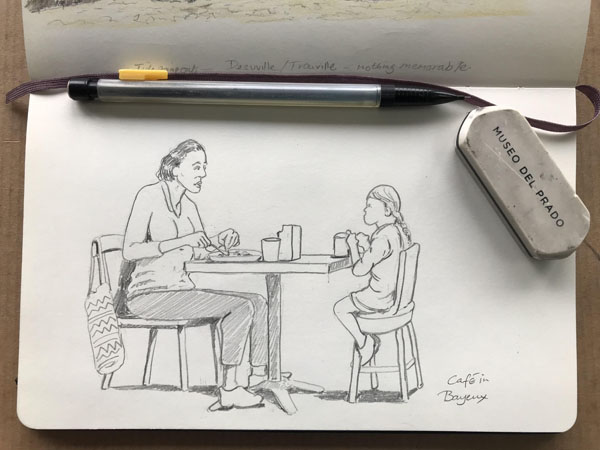 |
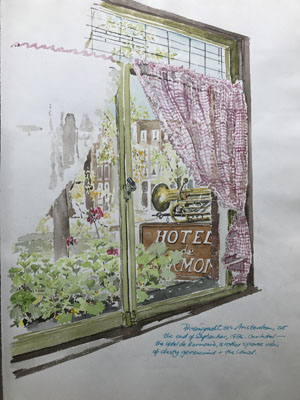 |
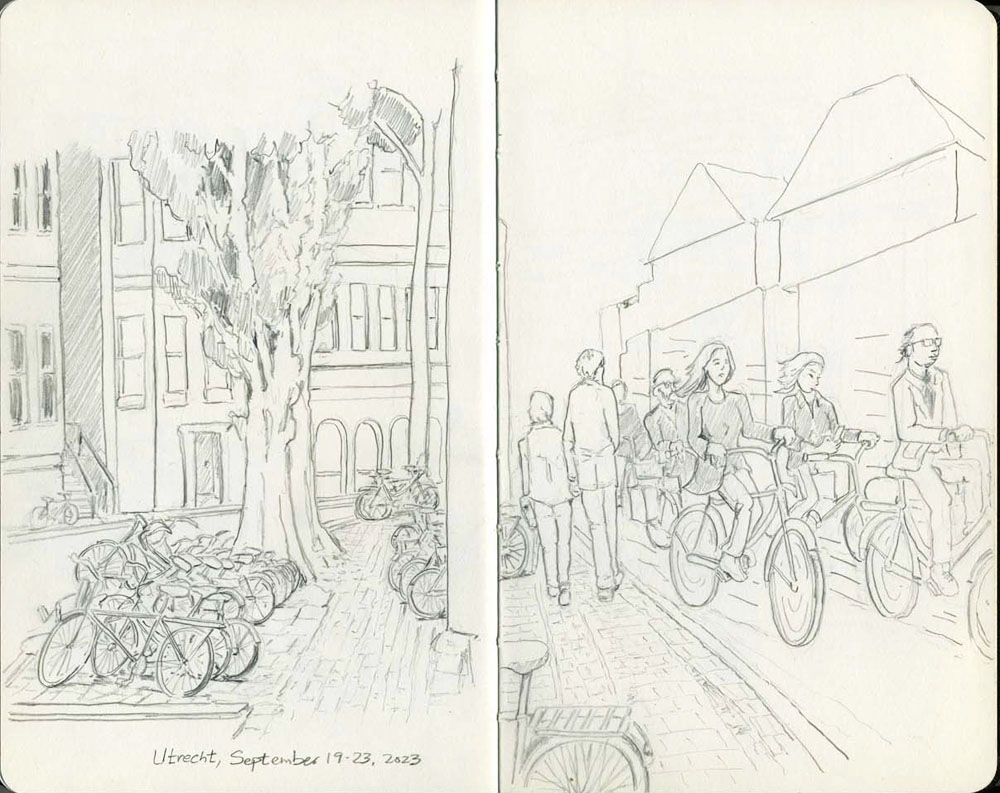
| We rented an airbnb in Utrecht for 4 days at the beginning of
the trip and didn't go into Amsterdam at all. The weather was
windy and showery. Utrecht is the bicycle capital of almost everywhere, partly perhaps because of its large student population. Nearly all the bikes are an upright "coaster" style, almost no one wears helmets, and as the land is of course very flat there's no need for the multiple gearing and dropped handlebars of the Spandex 10-speed crowd. Bicycles choke every sidewalk, especially in the Wittevrouwen (white nuns) district of the city where we stayed. As a pedestrian, you have to be very alert – there is almost no separation at all between the bike lane and the narrow sidewalks, the sidewalks are often canted toward the road to drain rain away from the buildings, and sometimes the sprawl of parked bikes forces you out almost into the bike lane. |
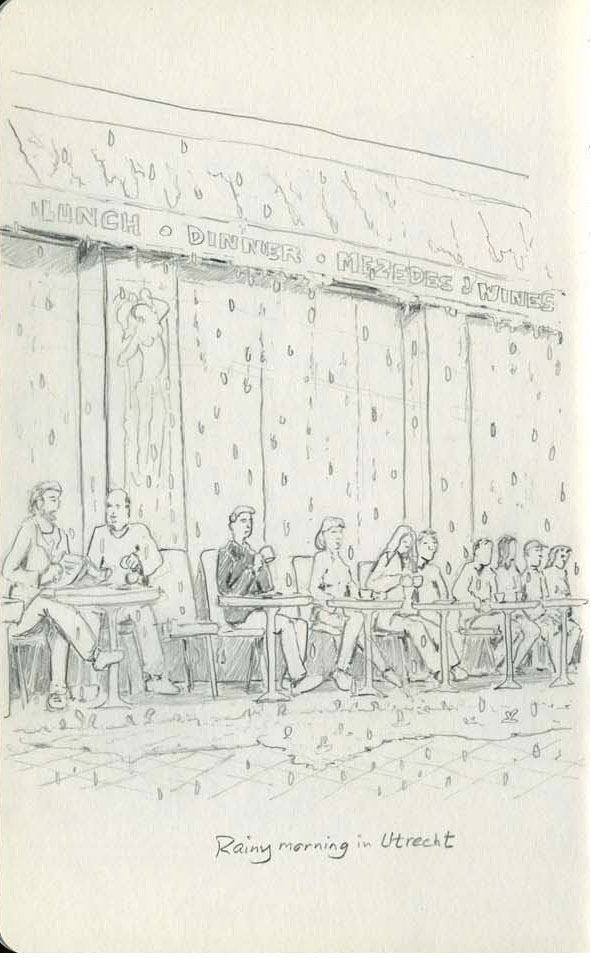
| We took a bus out to Maximapark south of the city to see a
garden, and happened upon a very odd piece of sculpture by
Fernando Sánchez Castillo described as "a monument for democracy,
an ode to those who rose up against injustice and oppression." It
is called Barricade and references the student uprisings in France
in 1968. |
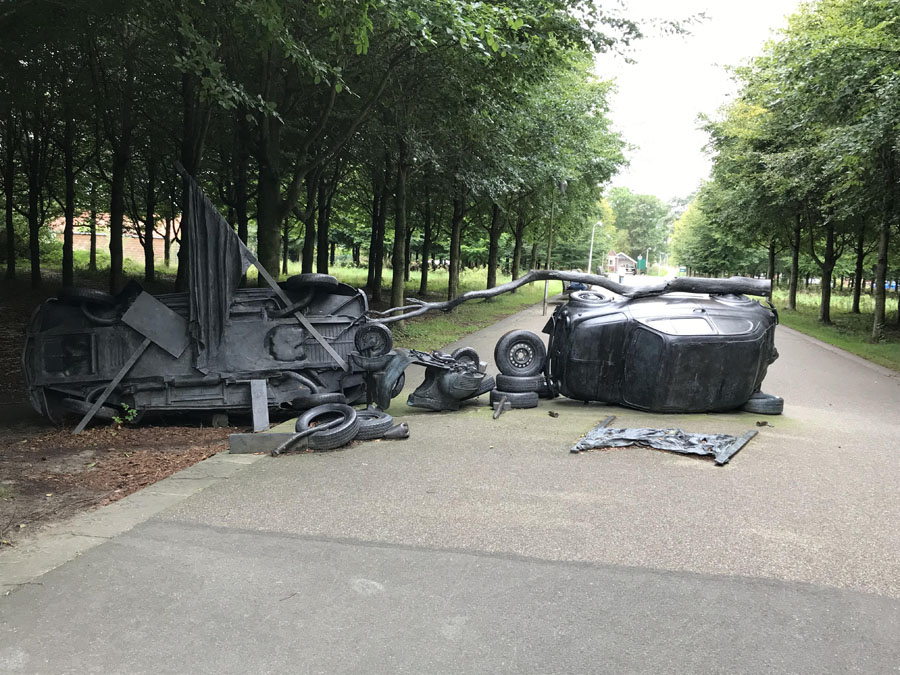
Later, a more traditional Holland on a daytrip to Leiden.

| We then took a train to Lille in northern France, spending most
of the Saturday en route due to track maintenance... |
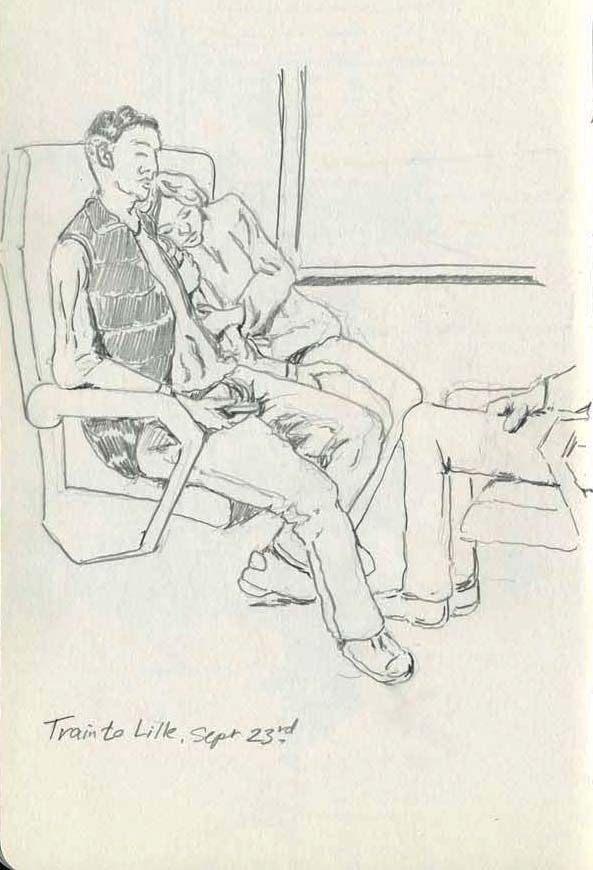
| ... to pick up the car we would use for the next dozen days.
Lille is a big city with a historic heart... |
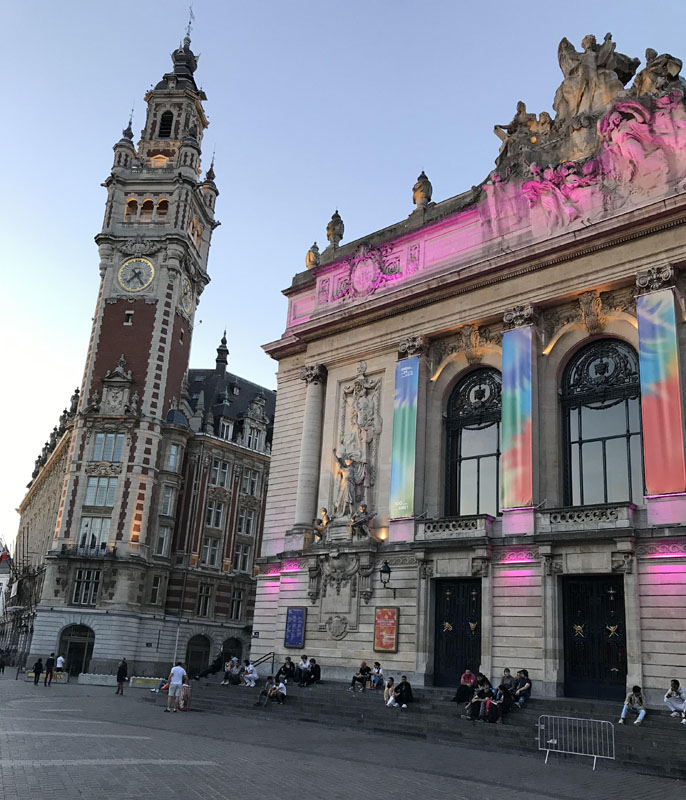
| ...but areas near the railway station laced with freeways,
megamalls, ramps and Modernist architecture – a bewildering place
even to walk through let alone drive from and return a rent-a-car. |
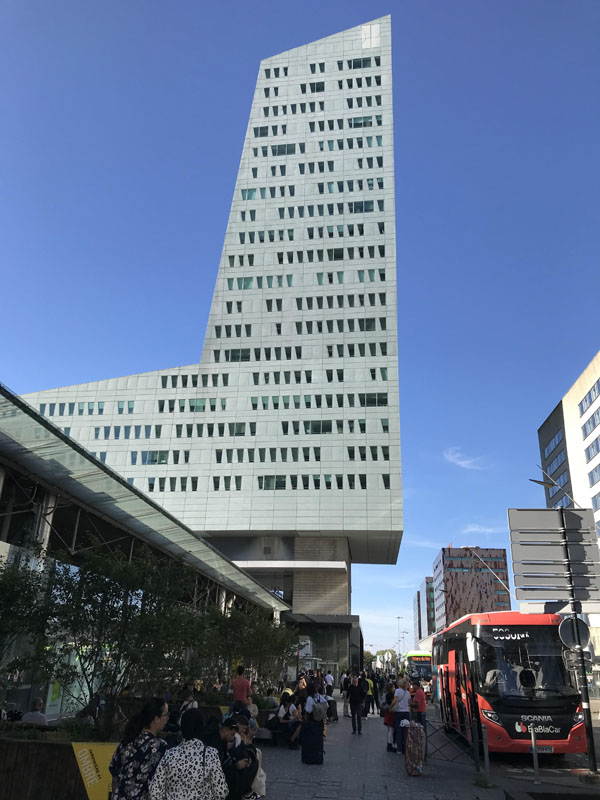
| It wasn't a great start to "car freedom," and when we got to
Lens late that afternoon we discovered that the entire town was
booked up due to an international rugby match. We eventually found
a hotel on the outskirts and then in town, after considerable
looking, one of the best restaurants we came upon in the entire
trip. It served faluches, a local dish of a kind of pizza
on top of a round dome of pain blanc – the name evidently
coming from a type of hat once worn in that part of
France/Flanders. |
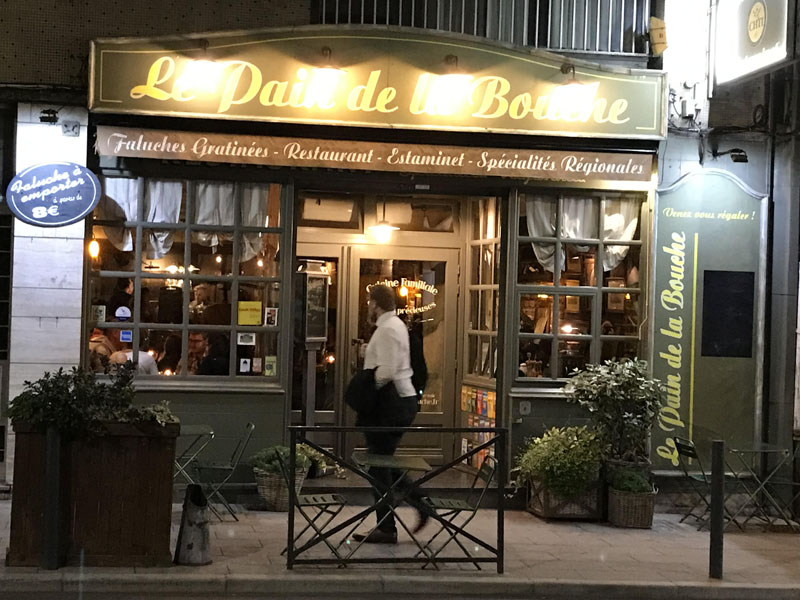
| You travel south from Lens to Arras through placid countryside
fought over viciously – World War I's Western Front – travelling
through land occupied by the German army, and come into sight of
Vimy Ridge – the strategic hill captured by Canadian troops in
1917 with the loss of more than 3,000 Canadian lives in one of the
decisive actions of that horrid war. The little drawing on the
lower left shows the ridge and the siting of the extraordinary
memorial from the 1920s by Toronto sculptor Walter Allward. It is
deeply moving to visit – so serene on its hillside, abstract yet
adorned with figures all of whom express loss and grief. There are
no flags, helmets, rifles or anything that references any martial
emotion of triumph or victory. Names of the dead are carved into
the walls. The grieving woman figure gazes out across the plain once occupied by the German Army toward the other landmark of the area: pyramidal slag heaps from the coal-mining operations that fuel the industries of war and peace. |
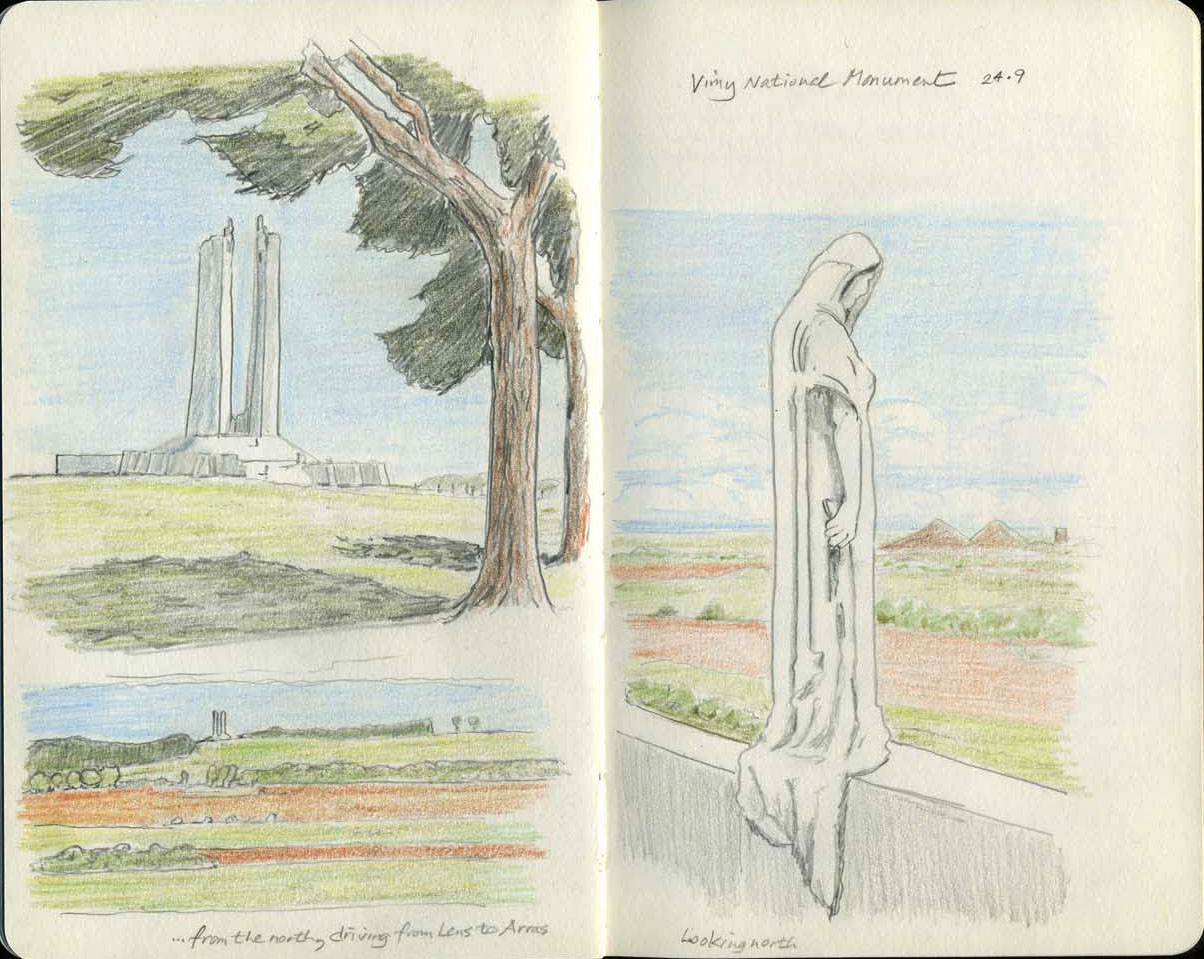
| Doullens is a town west of Vimy, on the way to the coast, in the
midst of an exquisite, unchanging countryside. As in many towns,
there are signs of the slow abandonment of small places for bigger
ones, and traditional shops for supermarket chains like
Intermarché, Carrefour and Aldi. The gutted church with half its
roof burned out, below, was one example; the little bar-atelier
across the narrow street was actually closed and used as a home
for, amongst others, a woman sitting on the step and looking at
her phone in the morning sunshine. It was a Sunday morning and the
streets were empty. We went there specifically to see if the hotel
where we stayed in 1986 was still open ... |
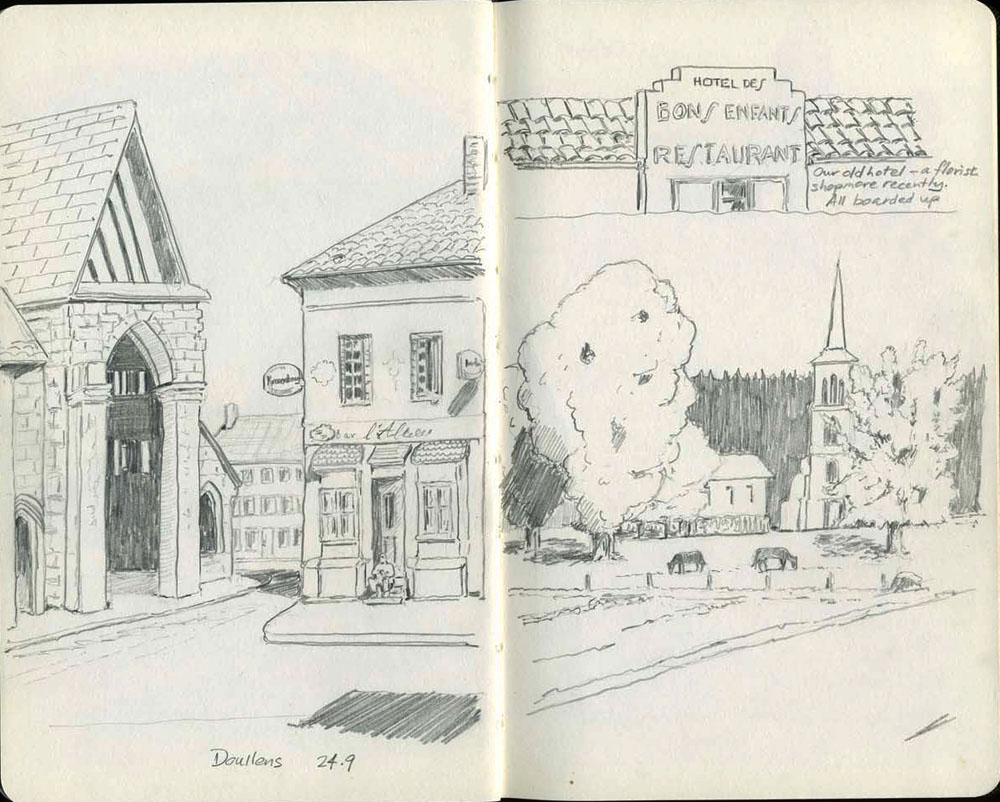
| The hotel name was still on the façade. Below it was a worn sign
for a florist shop, but the storefront itself was boarded up. Its
dining room was a lovely warm place nearly 40 years ago... |
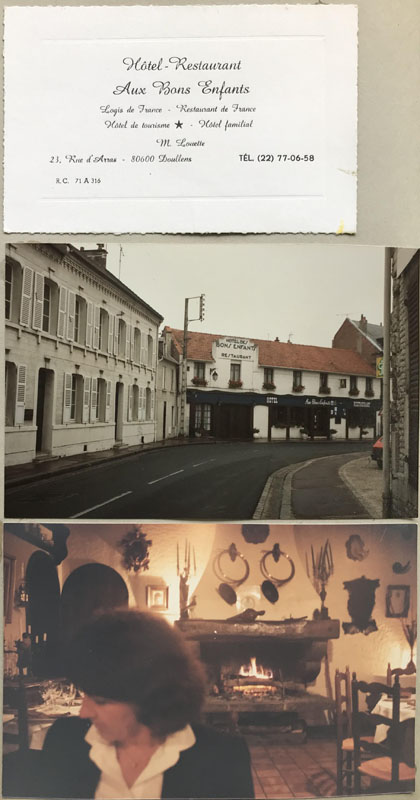
| Thence through Abbéville and out to the coast to Le Tréport, a
very picturesque town where we walked around for a few hours and
contemplated staying. Morning coffee: three women, one with a dog
on her lap, so France hasn't changed much! |
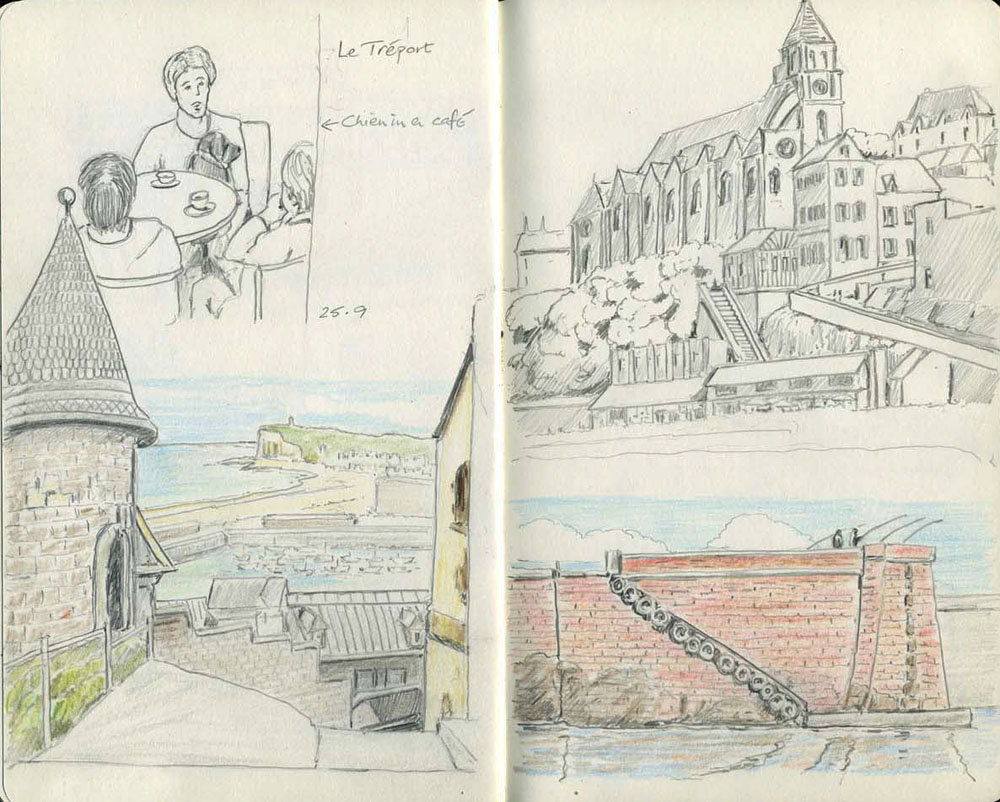
| Below: the poissonerie municipale. Like every coastal town, it's
a seafood-lover's paradise. It seemed that the main activity was
feeding visitors elaborate lunches and dinners at the open-air
brasseries along the waterfront. And, in sunny weather, offering
swimming, although the beach of pebbles did not look inviting. |
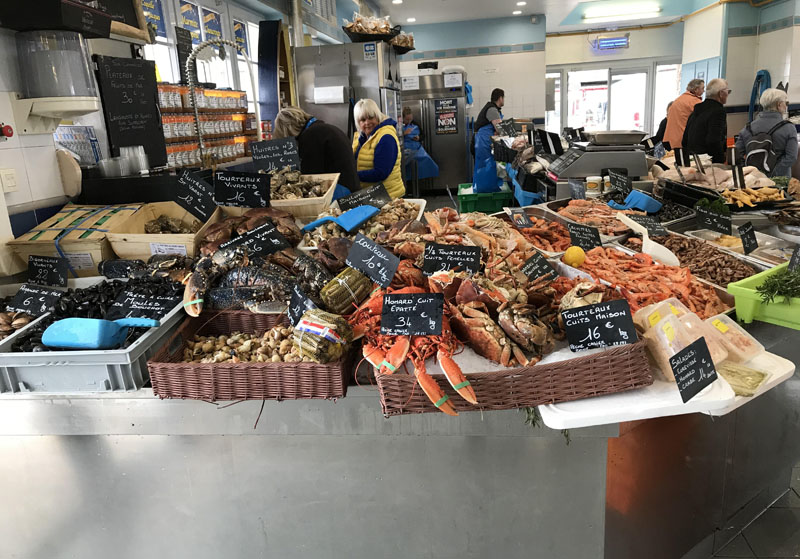
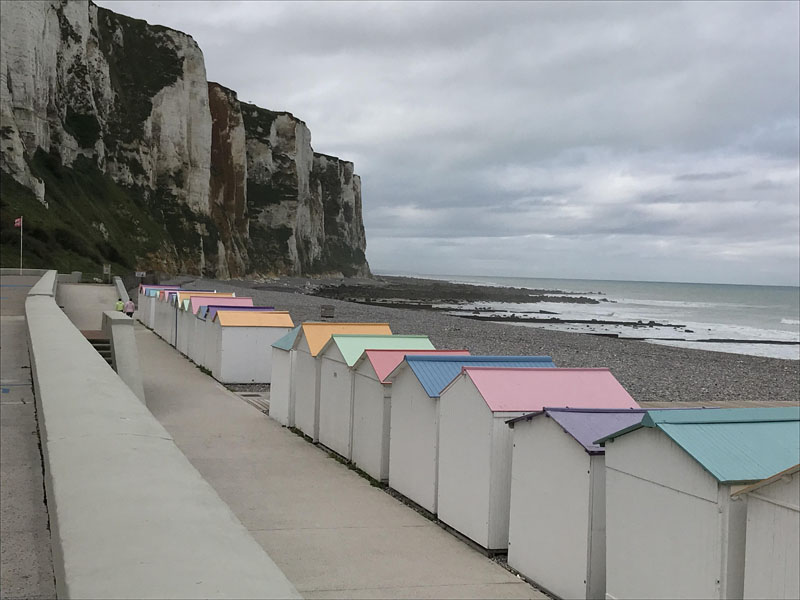
| The gourmet seafood lunches and dinners, especially with les
moules (mussels), continued all the way down the coast as the main
activity. We drove through the famous 19th century tourist spots
of Honfleur, Deauville, and Trouville, captured in their prime by
Impressionist painters like Monet and Manet, but saw little of
interest. The towns themselves were dull. Reading more about them
(in Robert Herbert's Impressionism: Art, Leisure and Parisian
Society) and how they developed from little fishing villages
to resorts in the 19th century, it becomes clear that a Parisian
style of urban planning was imposed on them – squares and
boulevards and a few grand villas. Quite dull. |
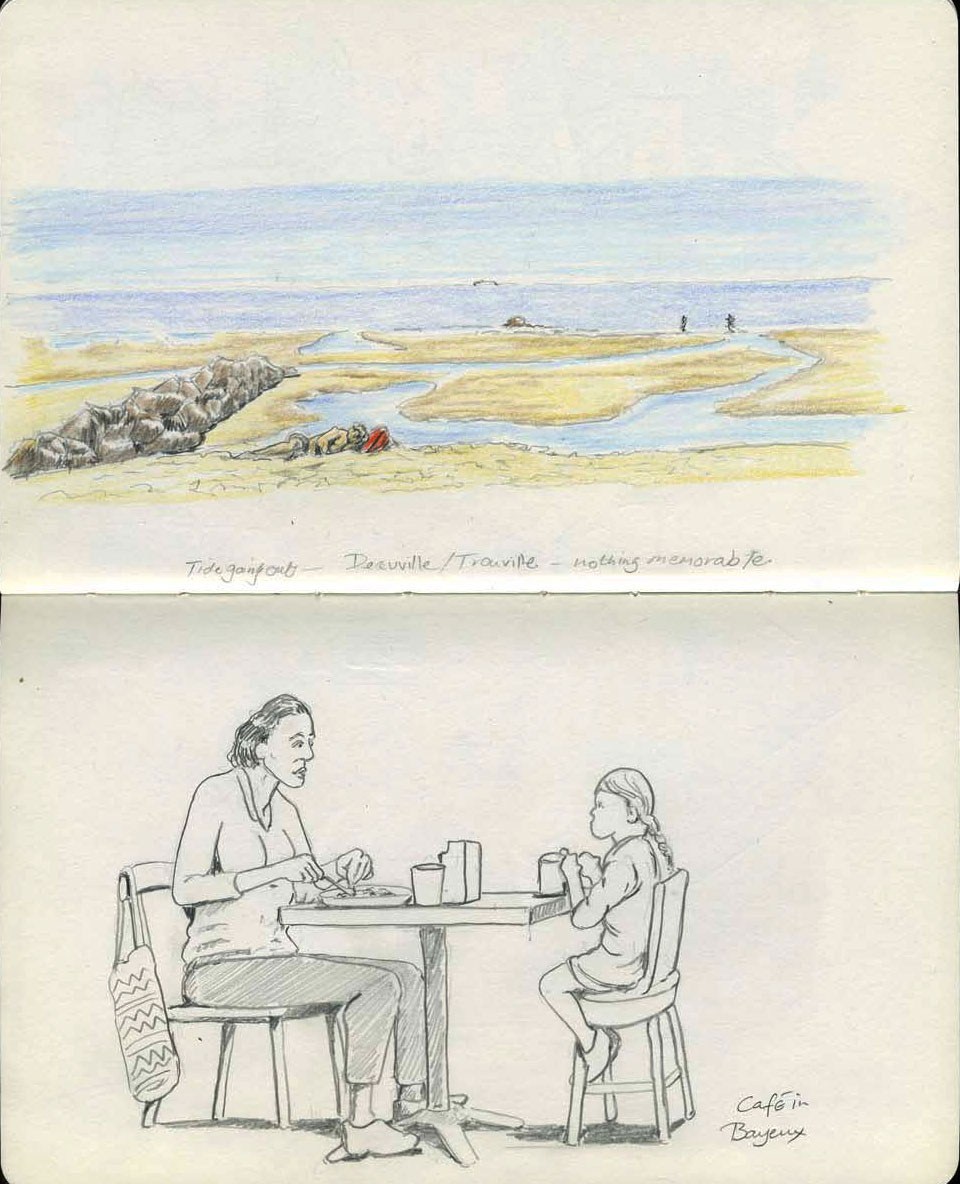
| So we kept going to Bayeux, found an excellent
hotel (the Hotel d'Argouges) and revisited the famous tapestry for
the first time in many years. |
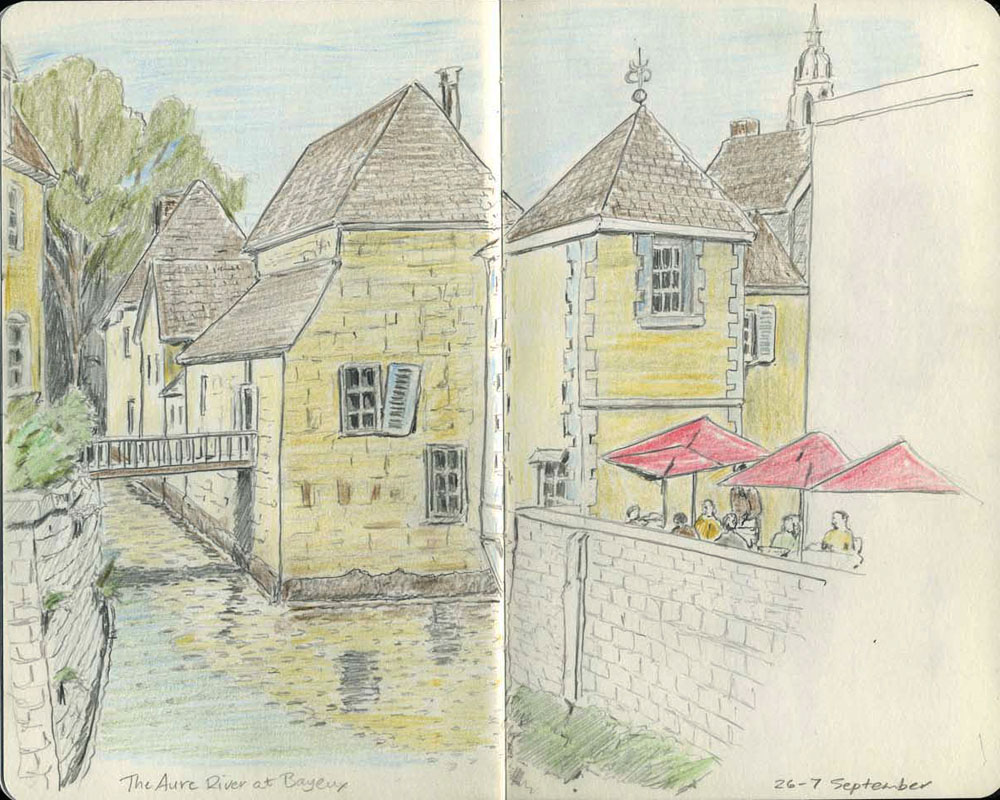
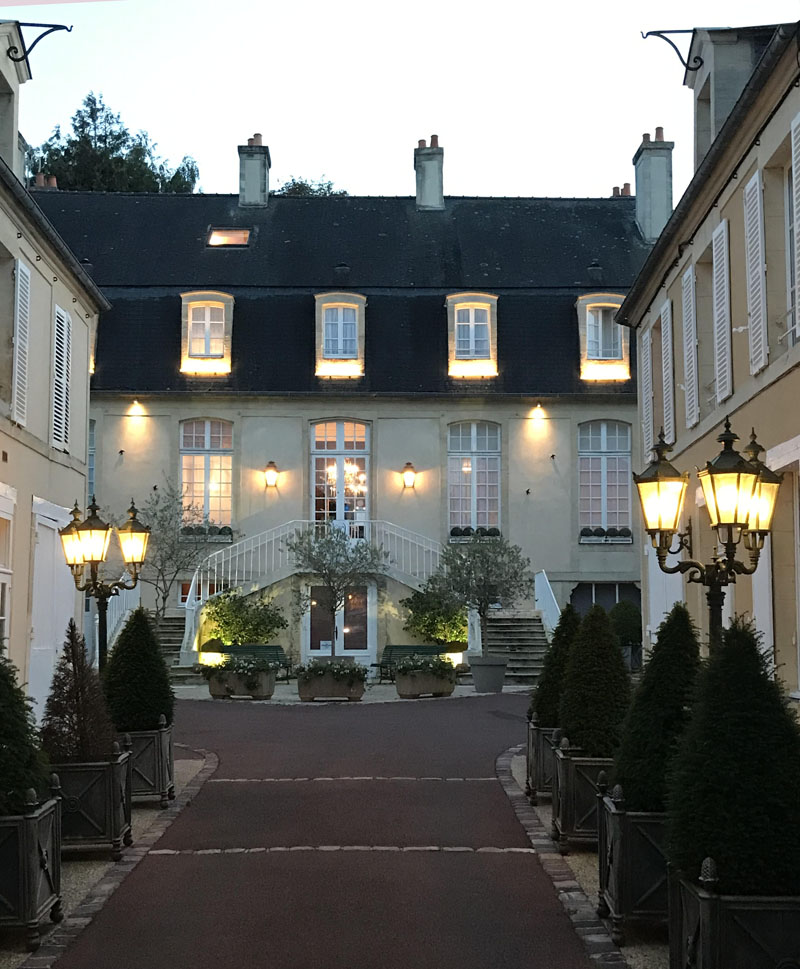

| Then on to Saint-Malo, the venerable fortified town on the north
Brittany Coast, where we'd never stopped before. Stunning
ramparts, an interesting centre within the walls, and wonderful
views out to the various islands with their own little forts. Part
of the reason for going was the book "All The Light We Cannot
See," the 2014 novel by Anthony Doerr, which is set there during
WWII and the horrid bombardments after D-Day in 1944. "Kouign
Amann" (written on the drawing) is a Breton pastry that all the
shops sell. |
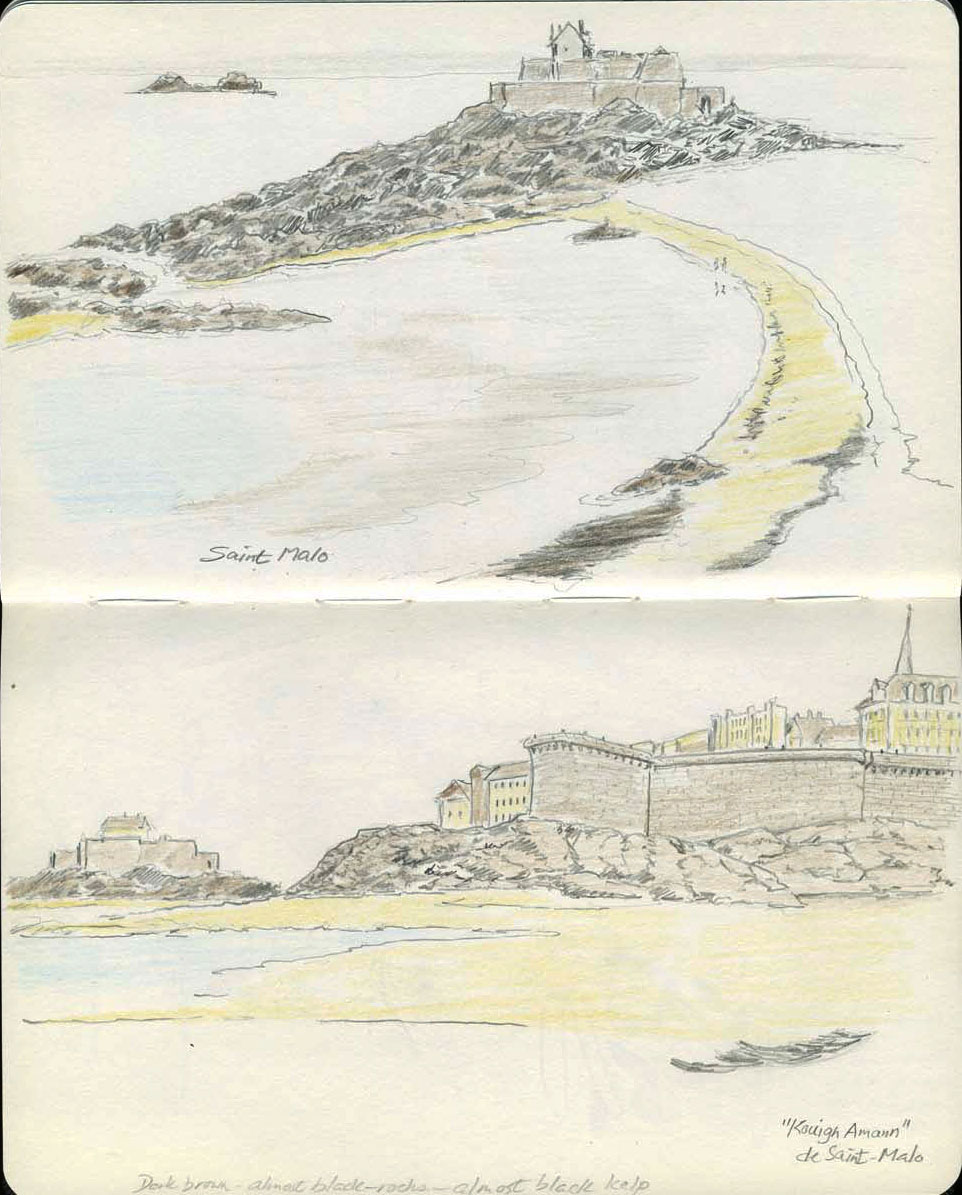
| Ate in our hotel's dining room: la France et Chateaubriand, near
some moule enthusiasts... |
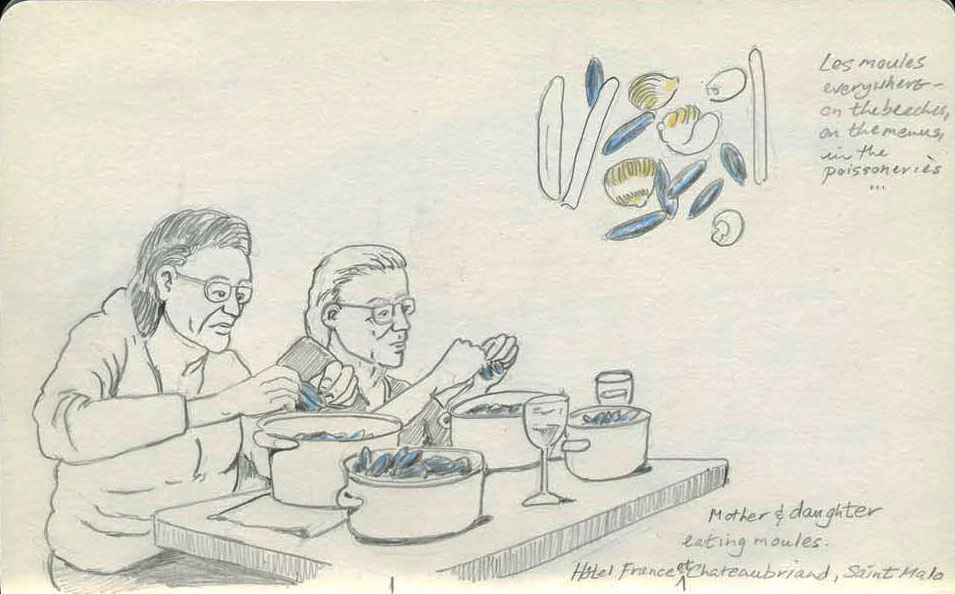
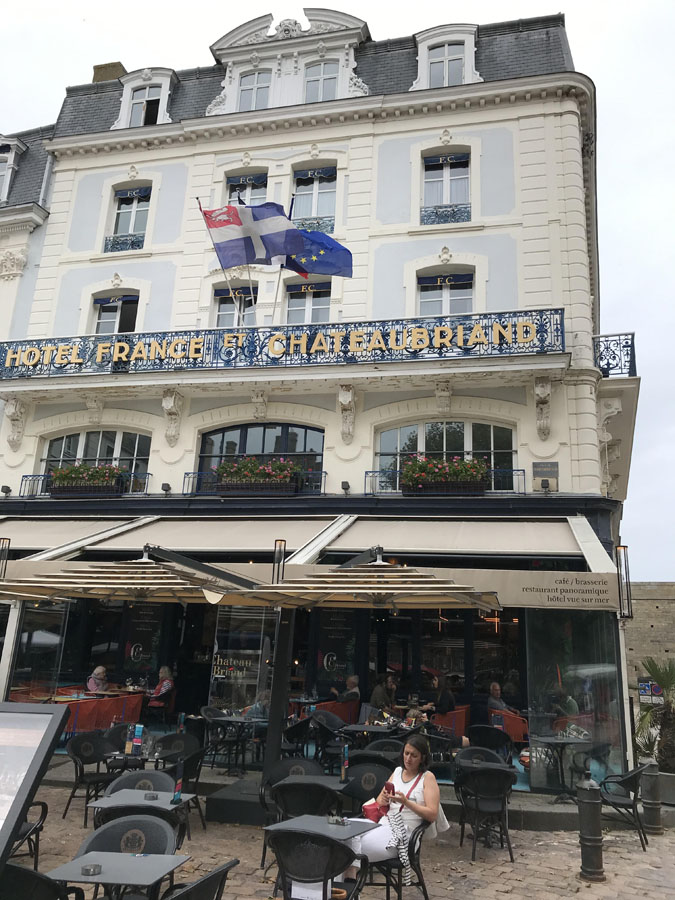
| Back on the road, we headed north and east. The white Charolais
cattle are everywhere. At one spot, a herd was lying comfortably
near the side of the road. We stopped and I thought I could walk
back and draw them without disturbing them. Wrong – several of
them got up and moved around restlessly.... I soon gave up. |
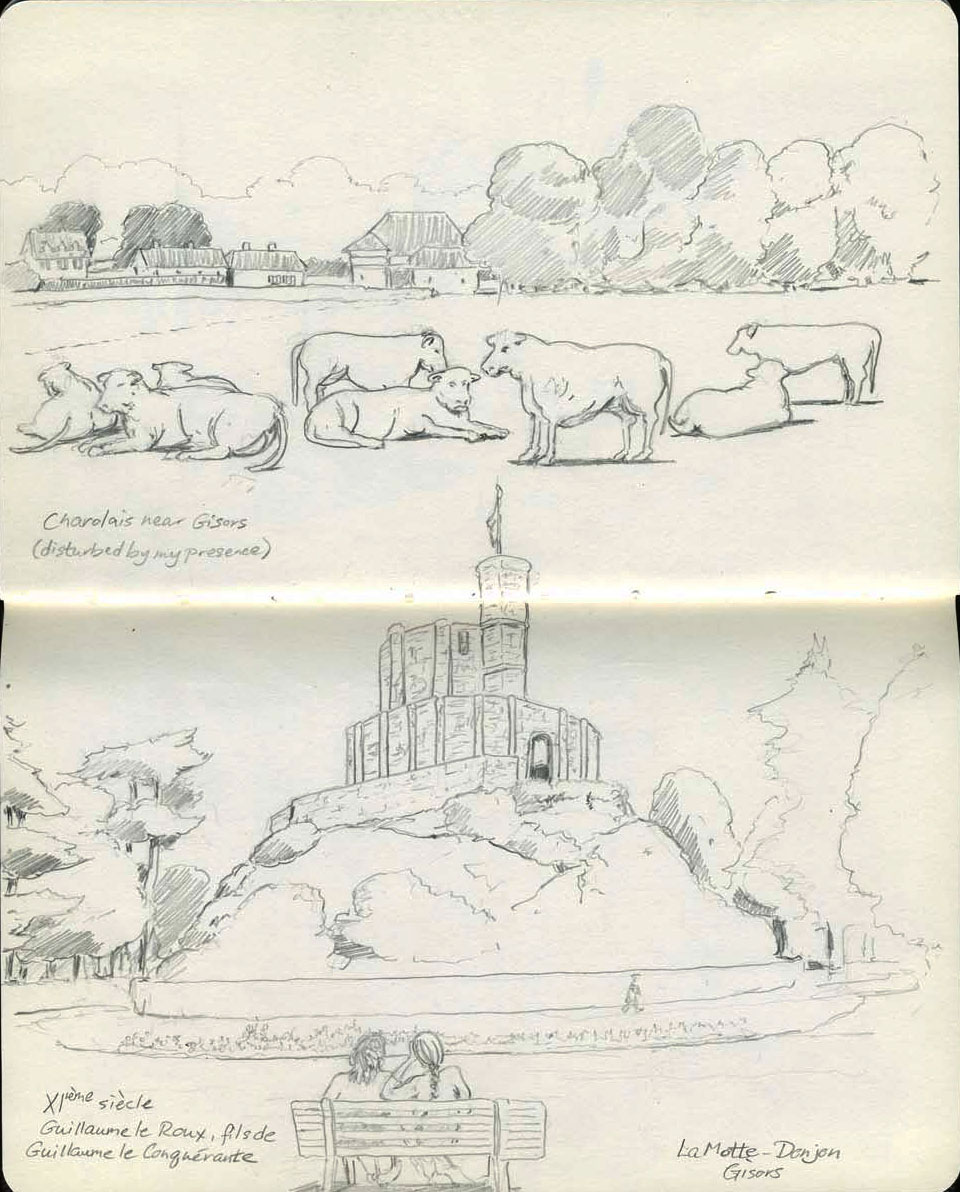
| Gisors is a small city southwest of Beauvais near the north bank
of the Seine. We went back to it, climbed La Motte-Donjon to look
at the tower but weren't able to climb into the tower as we had in
1986. Apparently, there was a story of treasure buried in the
hillside
that took hold with the scavenging population to the point that
the fort, nearly 1,000 years old, has been dangerously undermined. |
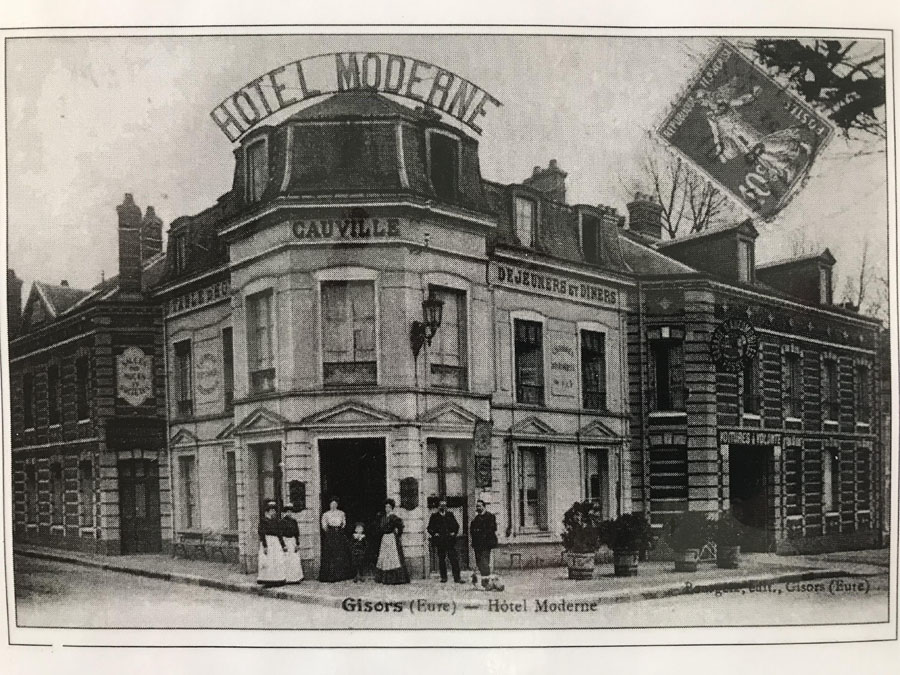
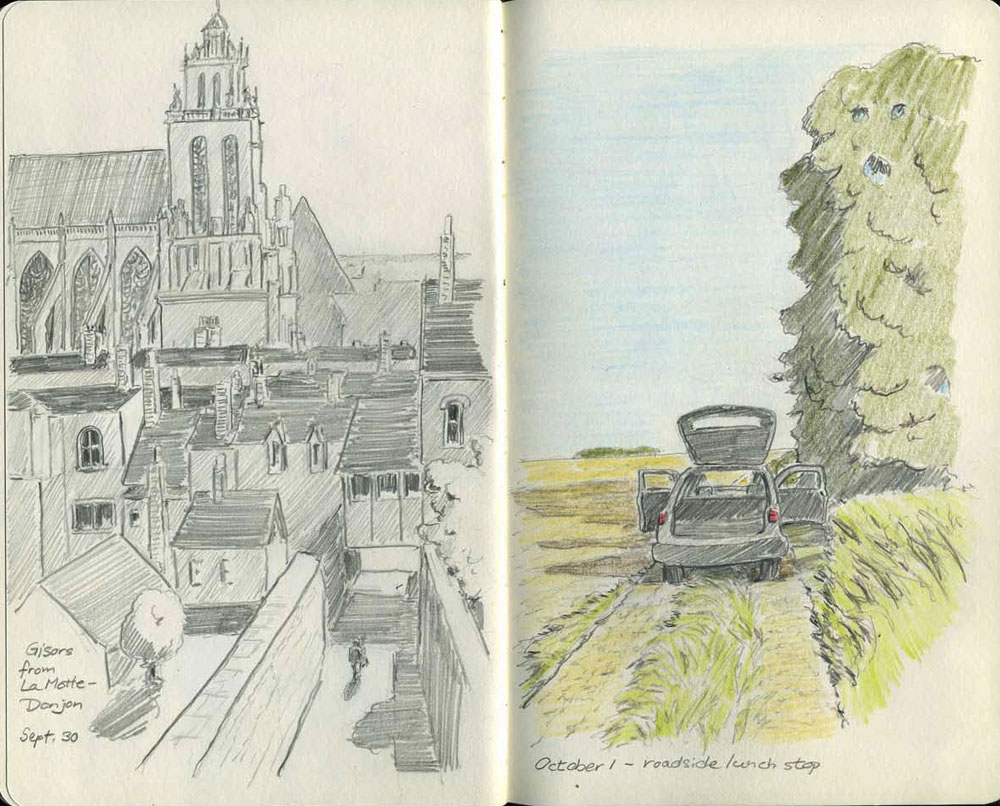
| Above: the great old hotel we found in Gisors, the town and its
cathedral, and the countryside on the way north back to Lille. It
was a Sunday, and many of the fields were dotted with rabbit and
pheasant hunters, and presumably rabbits and pheasants, some of
the former wearing fluoro vests and others (more confident,
presumably) wearing camo. |
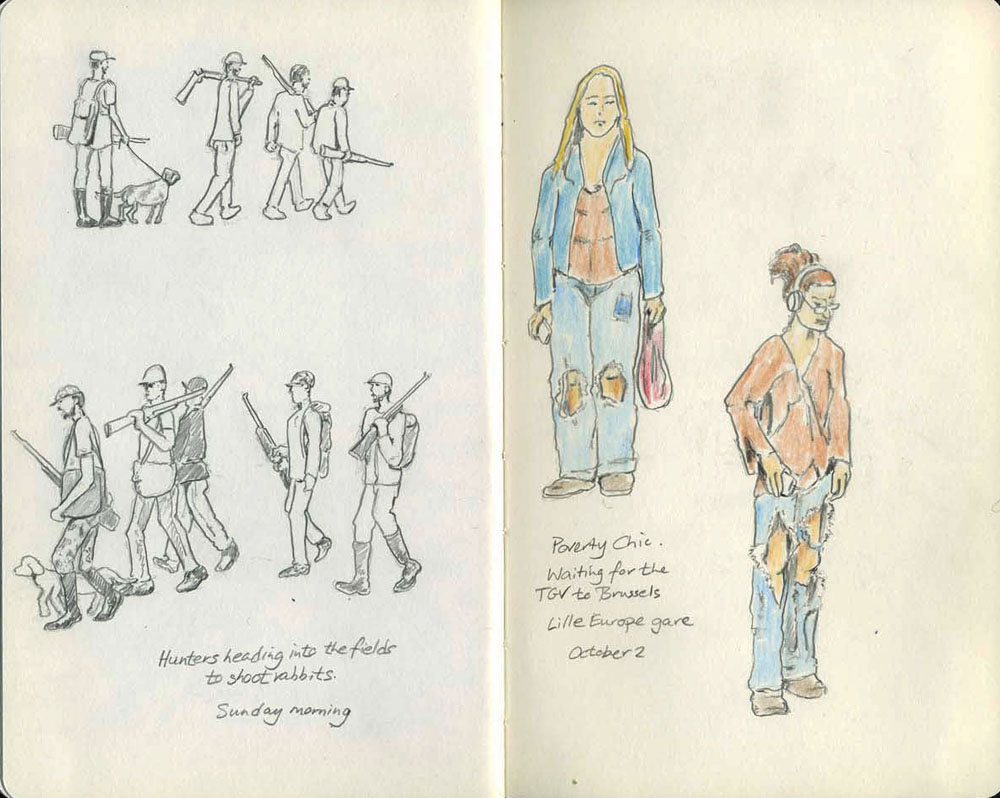
| Back to Holland on the train, two days in a pleasant airbnb in
Haarlem near Amsterdam and the Schiphol airport, then home. |
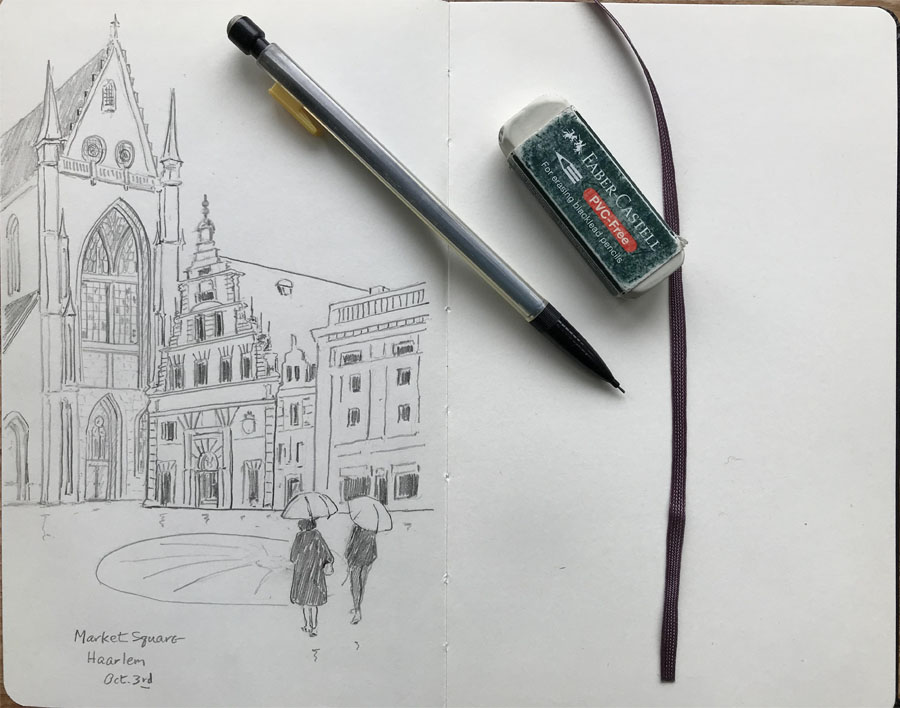
Contact me Go to home page Return to main travel page
Artwork & text © Michael Kluckner, 2023